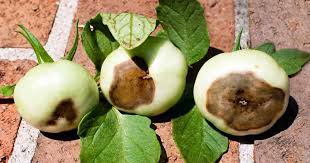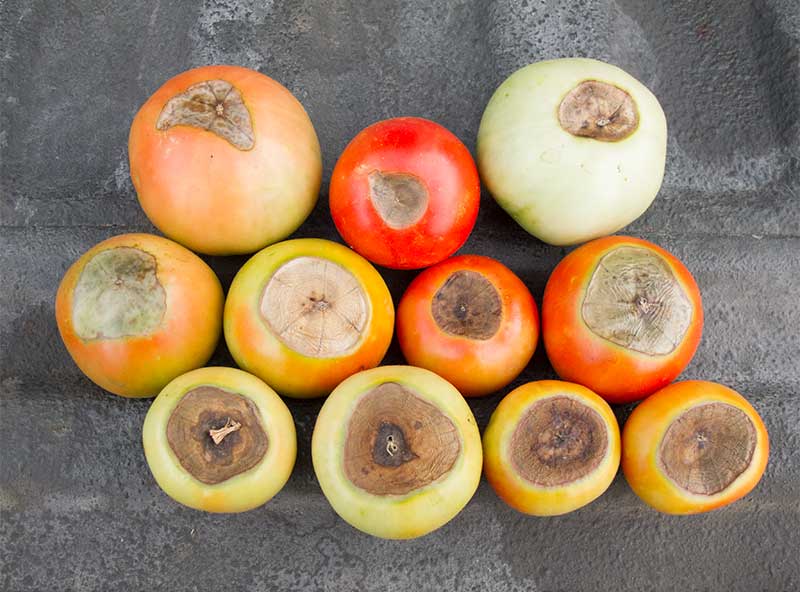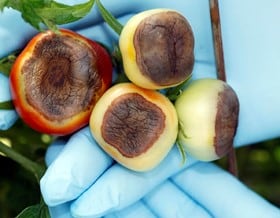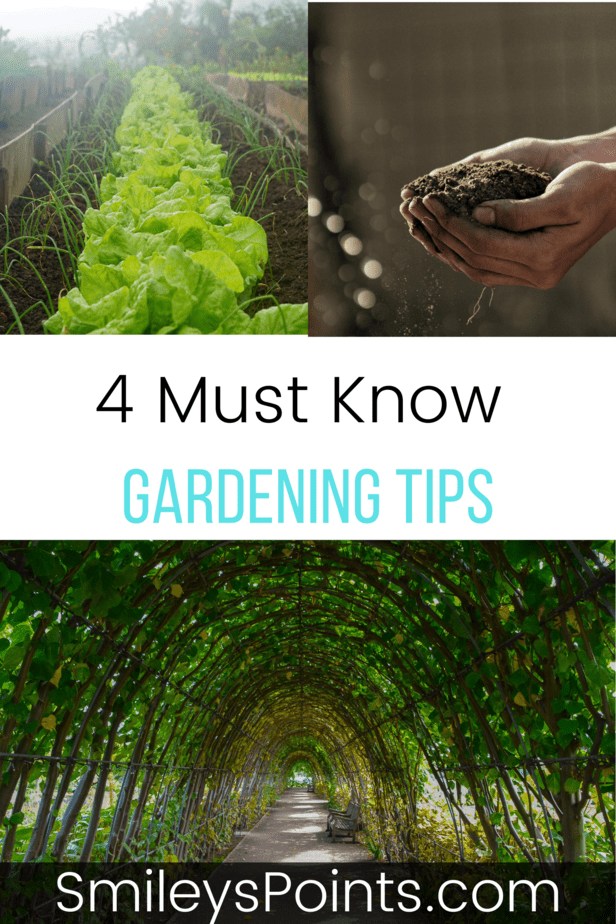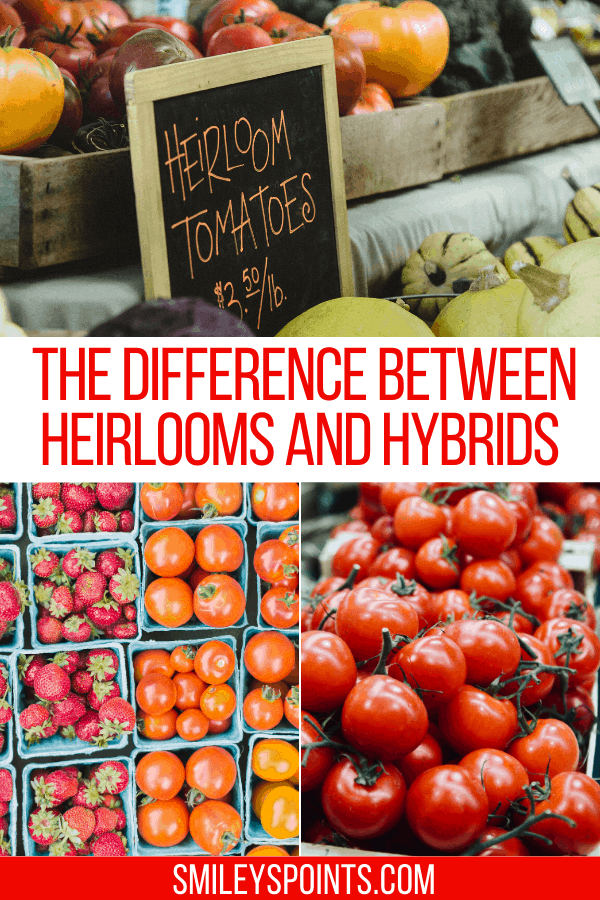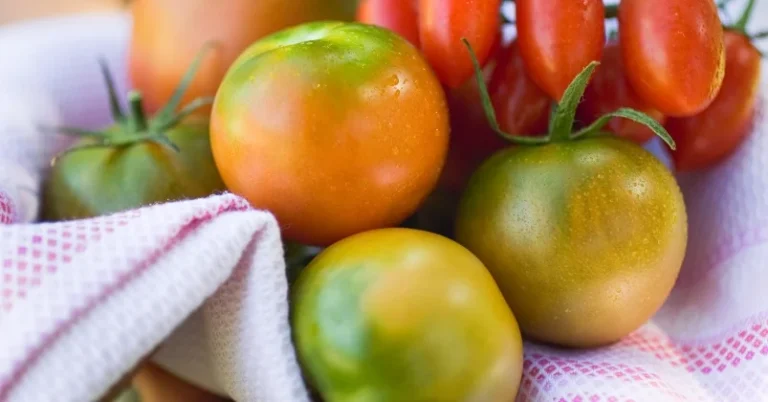How to Prevent Blossom Rot in Your Tomato Garden
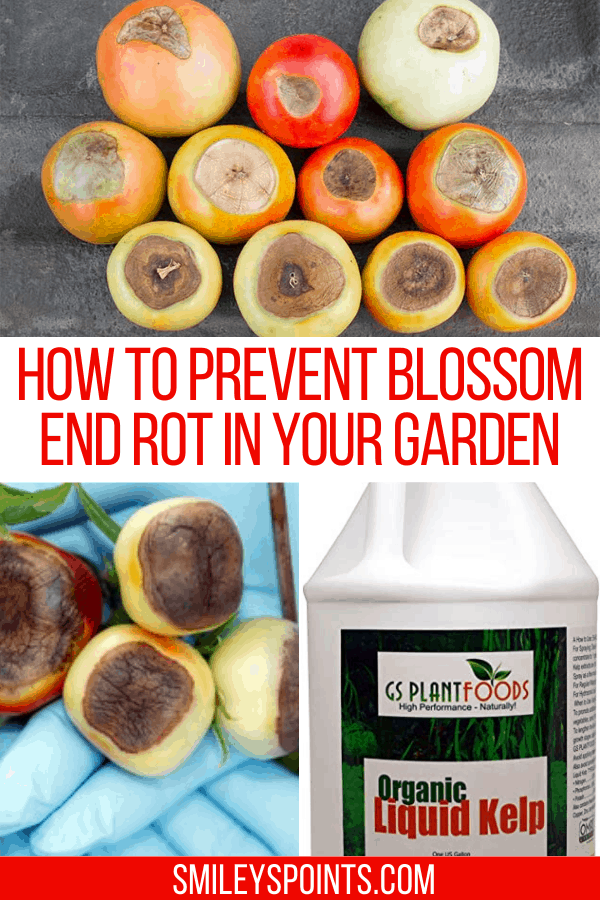
What is blossom rot?
Blossom rot is a common problem encountered by tomato and pepper gardeners. You will know if you have blossom rot by looking at the bottoms of your plants. There will be a dark, rotten spot where the flower was.
There are ways to combat blossom rot before it starts and ways to heal your plants once you realize you have it, but once it appears on an individual fruit, there is no way to “cure” the affected tomato. The best thing to do is to eliminate the problem before it reaches that point. Prevention is key.
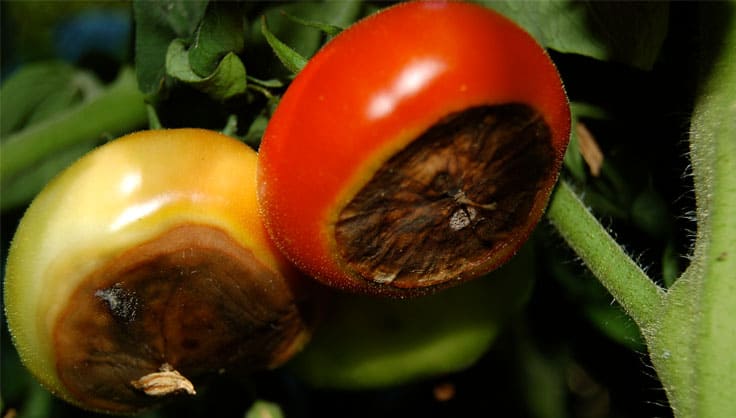
How does blossom rot start?
Blossom rot first appears as a small brown or black spot on the bottom of your tomato. Unfortunately, you may find this means the tomato is totally rotted out inside. If you let this continue you can lose a large portion of your entire tomato crop. So let's talk about preventing it.
What causes blossom rot?
What causes blossom rot to start is a deficiency in calcium in the plant. It is important to note here that your soil may have enough calcium but the plant may not be getting enough from the soil. Make sure to test your soil before planting. In order for tomato plants to grow abundantly, they need the proper amount of calcium. Even if you have plenty of calcium in your soil, your plants may not be able to effectively absorb it. When this occurs, your plants are at risk of blossom rot.
How do I prevent blossom rot?
Prevention is the best medicine. The sooner you start taking action the more likely it is that your plants will recover. The way to prevent blossom rot is to ensure your soil has enough calcium and the plants are able to absorb it efficiently. Before you plant your tomatoes, be sure to have your soil tested or do it yourself with an inexpensive soil testing kit. Soil that is ideal for growing tomatoes should be slightly acidic, with a pH somewhere between 6.0 and 6.8. If your soil is too acidic, you can add some limestone or lime to increase the pH. If you add too much, you’ll end up with soil that is too alkaline so be careful.
If your soil is naturally alkaline, you can add rich organic matter, elemental sulfur, or an acidifying fertilizer, such as ammonium sulfate. It can be very challenging to lower soil pH, however, because limestone in the ground is continually dissolving. Using a raised bed grade may be more ideal in areas with high alkalinity in the soil. I like to use raised beds because I then have better control over the temperature, the moisture, and the alkalinity of the soil.
What is the best way to water a tomato plant?
Now that we have the ph figured out let's move on to watering. You’ll want to ensure your plants are receiving enough water on a consistent basis. Optimal tomato growth requires regular and deep watering so that water gets all the way down the entire root system. Do not allow your tomato plants to get dry between waterings. Tomato plants need about 1-1/2 inches of water per week. If you live in a warmer climate as I do you may need to water a little more often. How do you check to see if your tomato plants need water? Read on 🙂
I usually stick my finger in the soil about 3 inched deep if the soil is still moist at that level I check it again the next day
How do I stop blossom rot?
As stated earlier blossom rot usually shows up at the very beginning of the season as first fruits appear. If you notice your tomatoes are showing possible signs of blossom rot, make sure your plants are watered deeply every 4 to 5 days. I usually stick my finger in the soil about 3 inched deep if the soil is still moist at that level I check it again the next day. once the soil feels dry about 3 inches down I water the plants again. I do this to avoid overwatering the tomato plants and to ensure they are getting enough water.
Does liquid kelp help blossom rot?
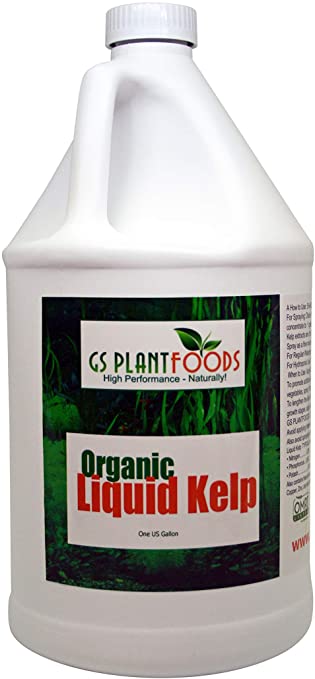
I have read about but have not yet tried liquid kelp extract or kelp fertilizer as a way to combat blossom rot. I will try some if I get blossom rot on my tomatoes this year and update this post with the results. Kelp is a very nutrient-rich form of seaweed that can be very useful for your garden. The extract and fertilizer are readily available in local garden centers, large home improvement stores, or online retailers. I would test it out on a smaller portion of my garden to see how it works before using it on the entire crop.
Blossom rot can be detrimental to a tomato plant or to your entire crop, a little preparation and planning will go a long way towards ensuring you grow the biggest juiciest tomatoes this season and every season.
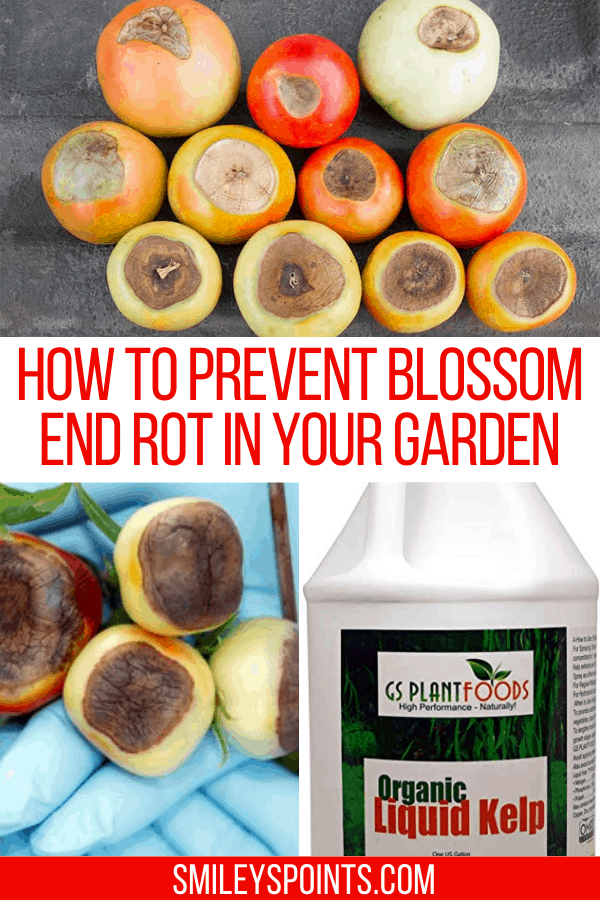
What have you tried that has worked? What have you tried that has not worked for you? leave you answers in the comments below.

